Steve's Turkey and Gravy
- 22 to 30 lb Turkey (save the neck and giblets)
- 6 Tbs Steve’s Magic Paste
- 4 large onions (2½ lbs)
- 4 heads garlic (8 oz)
- 2 large carrots (10 oz)
- 4 large stalks celery (10 oz)
- 2 bunches Italian parsley (4½ oz)
- 24 cups (4 48-oz. or 6 32-oz. boxes) Swanson's chicken broth (not organic)
- 6 cups (1 48-oz. box) Swanson's beef broth
- 1 lb salted butter
- 4 Tbs flour
- Lawry's seasoned salt
- fresh ground black pepper
- salt
OVERVIEW: The bottom of the roasting pan underneath the turkey is filled with vegetables, giblets and any other turkey scraps. As the turkey cooks, the vegetables and meat scraps roast along with the turkey drippings. This forms the basis for the gravy. Before the turkey has finished roasting, the vegetables and giblets are removed and simmered in reduced chicken and beef broth to create the gravy. The liquid is strained and thickened with roux. One 30 lb turkey serves about 16 adults. One 22 lb turkey serves about 10 adults.
DIRECTIONS: Preheat oven to 450°F. Use the convection bake setting if your oven has this feature.
Pour 16 cups of chicken broth into a large pot and bring to a boil. Turn heat down and simmer while the turkey is cooking until the broth has reduced to about one-third of the original volume. This will take several hours. Later, before the turkey has finished cooking this liquid will be added to the roasted vegetables and meat scraps from the roasting pan to make the gravy.
Remove the giblet bag and the neck from the turkey cavity. Remove the tail and trim excess skin from the front and back openings of the body cavity so that the convection oven air is able to flow through the body cavity. This allows the turkey to cook from the outside and inside simultaneously so much less cooking time is required and the turkey will be less dry. (Remember that every minute that the turkey is cooking it is losing moisture so reduced cooking time means a less dry turkey.) Don't trim so much skin that the meat is exposed. Using a long thin knife, remove any meat or skin on the interior of the body cavity that would obstruct air flow. The goal is to maximize air flow through the body cavity. Save the giblets, neck, tail, and trimmed skin and fat for production of the gravy.
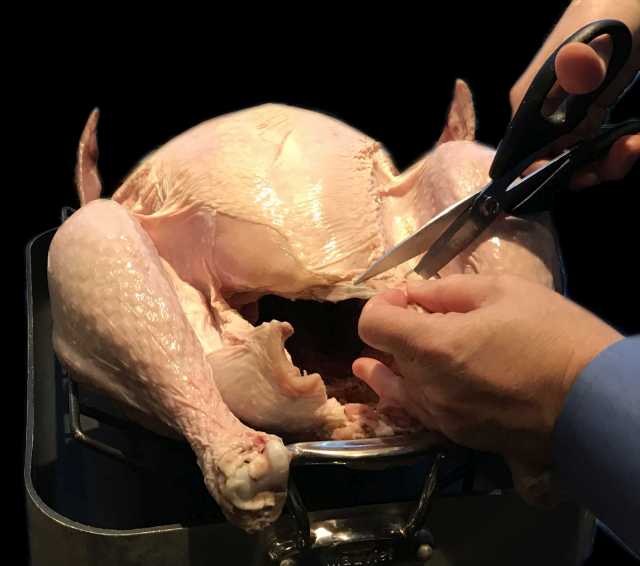
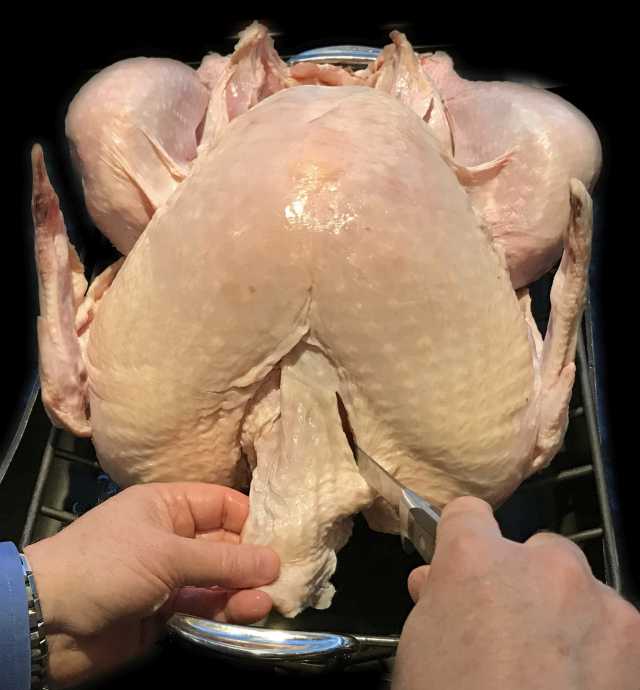
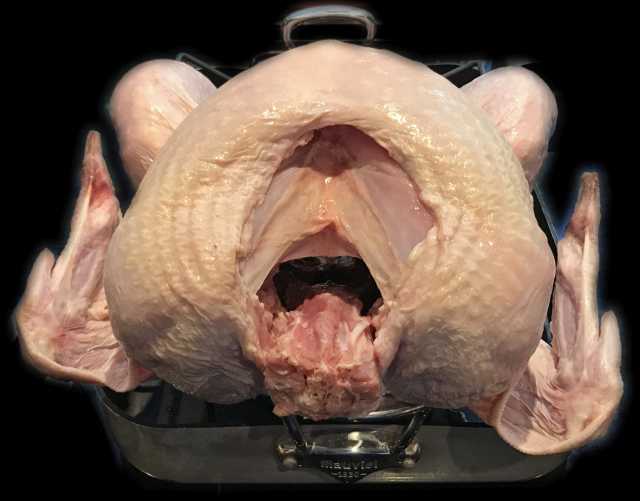
Pour 6 cups of chicken broth and 6 cups of beef broth into a large pan and reduce until fairly thick (see note). Stir in 6 Tbs Steve’s Magic Paste. This concentrated chicken and beef broth will be used to coat the vegetables and meat scraps that will roast along with the turkey.
Cut onion, carrots, celery and parsley into 1" pieces. Break up heads of garlic into individual cloves, smash each clove with the side of a large knife. Remove the peeling and chop the garlic. Set the cut vegetables and chopped garlic aside in a large container.
Cut up the turkey giblets into small pieces.
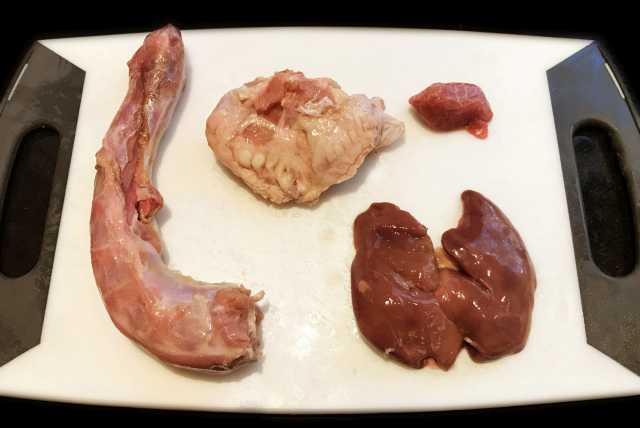
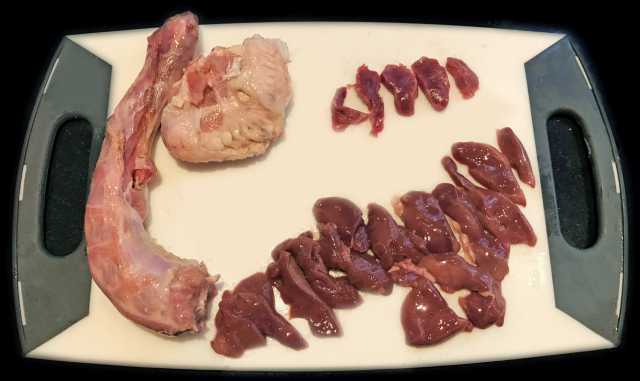
Using a heavy meat cleaver chop the neck and tail through the bone into 1" thick disks
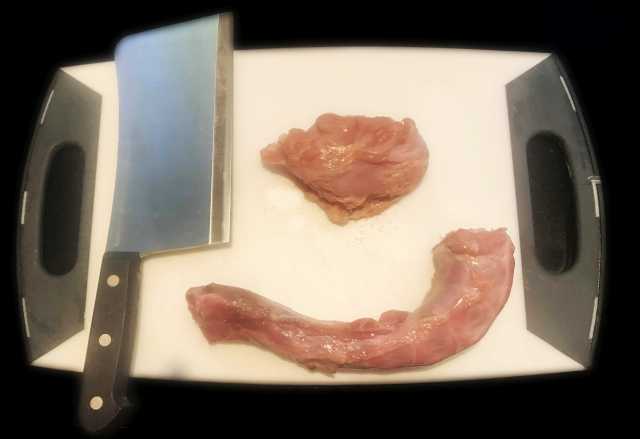
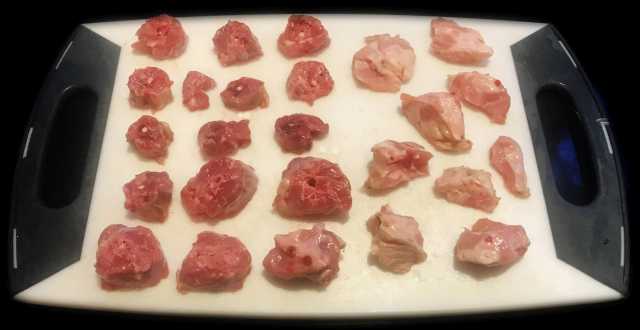
Place the vegetables and turkey scraps in the bottom of a large roasting pan. Add the concentrated chicken and beef broth and mix thoroughly.
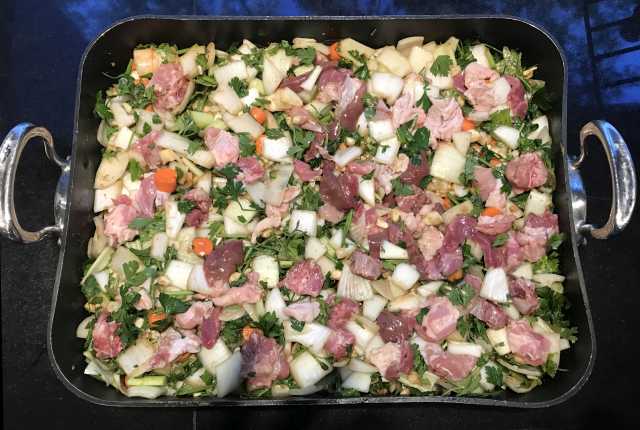
Sautée on stove top over high heat stirring frequently for 30 minutes or more until all the liquid is gone and the onions and garlic have started to brown.
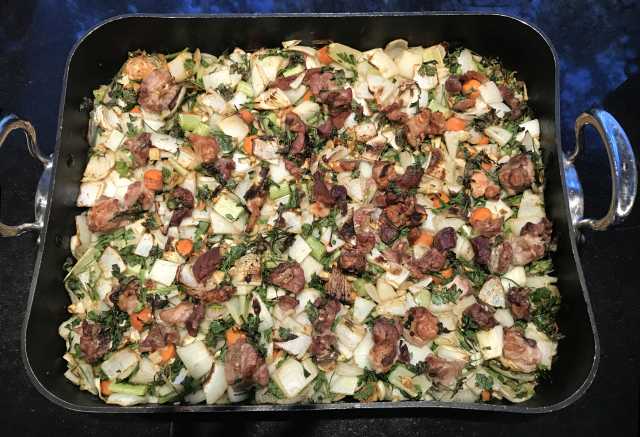
The first step in cooking the turkey is to brown the skin on the underside. Remove roasting pan with the vegetables and turkey scraps and place a roasting rack in the pan, moving the vegetables and meat towards the periphery of the pan as needed so that they will not be in direct contact with the turkey. Place turkey breast-side-down on a bed of crumpled aluminum foil on the roasting rack in the pan. Use enough foil so that the rack will not make indentations in the meat.
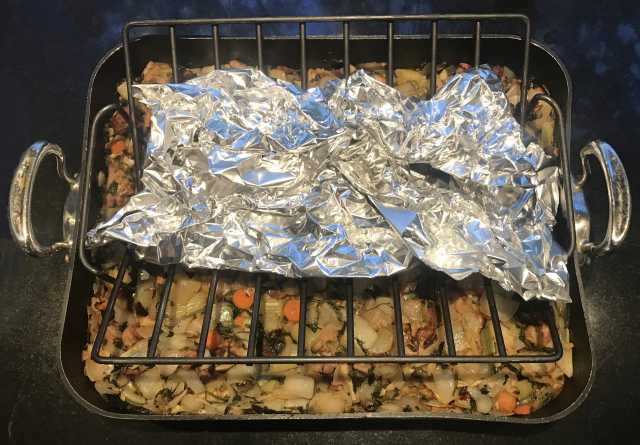
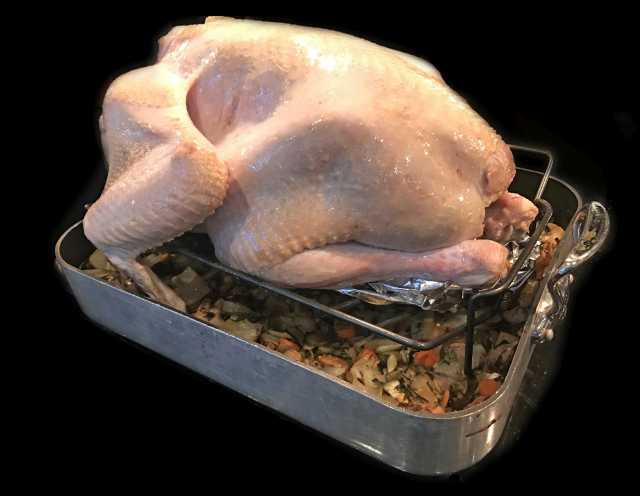
Place the roasting pan with turkey and vegetables in the 450°F oven. After 10 minutes, remove from oven, sprinkle breast-side-down turkey inside and out liberally with Lawry's Seasoned Salt, baste with melted butter and return to the oven. Once the skin has turned light brown remove from the oven and reduce the oven temperature to 350°F.
Remove the turkey from the roasting rack. Remove the bed of aluminum foil from the roasting rack and return the turkey to the rack breast-side-up. Sprinkle turkey inside and out again with Lawry's Seasoned Salt and baste with melted butter. Insert a meat thermometer into the thickest part of the thigh and return to oven to continue cooking, basting with melted butter every 20 minutes.
When the meat reaches a temperature of 140°F remove the roasting pan and turkey from the oven. Remove the roasting rack with the turkey from the roasting pan and transfer the liquid, vegetables and turkey scraps from the roasting pan to a large pot to be used for making the gravy. Replace the roasting rack with turkey back in the roasting pan and return to the oven to continue cooking. Follow the instructions below for making the gravy while the turkey continues to cook.
Check the turkey every 20 minutes. The skin on some parts of the turkey such as the wings and drum sticks will brown faster than other areas. As these areas reach the desired color, wrap them with heavy-duty aluminum foil and continue cooking. When all the skin has turned golden brown, cover the entire bird with aluminum foil and continue cooking until the meat reaches a temperature of 158°F. This should take from 2 to 3 hours using the oven's convection bake setting. Remove turkey from oven.
GRAVY: Add the reduced chicken and beef broth to the large pot with the liquid, vegetables and turkey scraps from the roasting pan and simmer for 30 minutes. As excess fat floats to the top, skim off the fat and reserve for making a roux.
While the vegetables and turkey scraps continue to simmer, in a separate pan sauté 6 Tbs of flour in enough of the skimmed fat to form a roux. Slowly add some of the liquid which has been simmering to the roux a little at a time, stirring well each time to eliminate lumps. Continue to add the liquid until the roux mixture is thin enough to be added back later to the hot liquid without clumping.
Pour the broth and solids through a colander placed on top of a second pot and allow the liquid to drain into the pot while pressing with a large spoon to obtain as much liquid as possible. Return the contents of the colander to the original pot along with two more cups of chicken broth and bring to simmer once again. After this mixture has simmered for 5 minutes, repeat this process, pouring the broth and solids through a colander placed on top of the second pot, allowing the liquid to drain into the pot while pressing with a large spoon. This process can be repeated a third time if desired.
Pass the liquid from the second pot through a strainer and bring to a mild simmer. Stir in the roux a little at a time until the desired thickness is achieved. If more thickness is needed, another batch of roux can be made using either more of the skimmed fat or butter. When done, season the gravy with fresh ground black pepper to taste, adding more salt if needed.
*Note: When reducing liquid, start with a high heat and then turn down the heat as the liquid begins to thicken to avoid burning, stirring occasionally with a rubber spatula so that the liquid does not stick to the pan. If your pan is not large enough to hold all the liquid, then reduce the liquid a little at a time, adding more liquid to the reduced liquid as the level decreases.